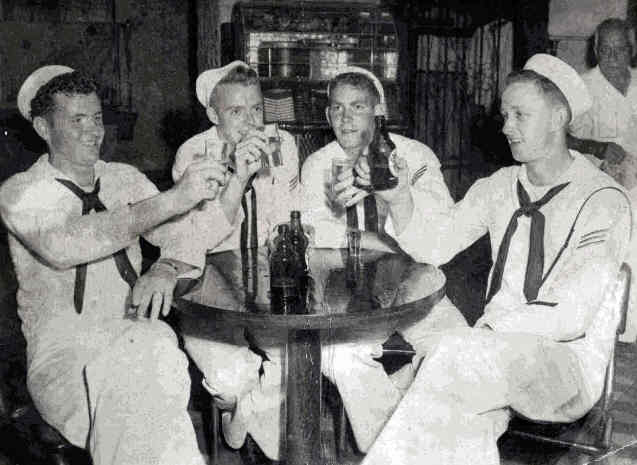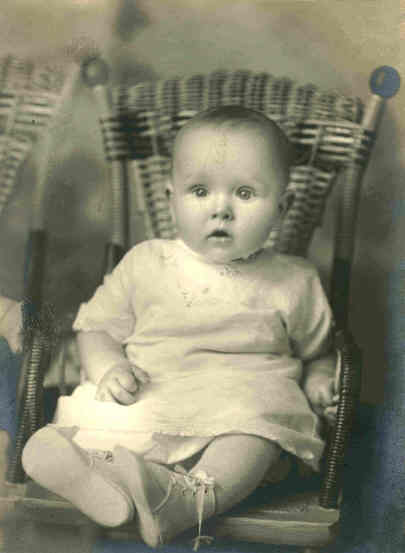
| On December 18, 1927, Harold Doidge Lowry was born to Ross and Minnie Lowry in Pueblo, Colorado. He would be their much-loved only son. Their first home was in Pueblo where they rented a house from 1927-1929. They moved to Colorado Springs where they rented a couple houses before purchasing a home on 813 Cedar Street. |  |
|
|
The proud parents with their new baby boy! |
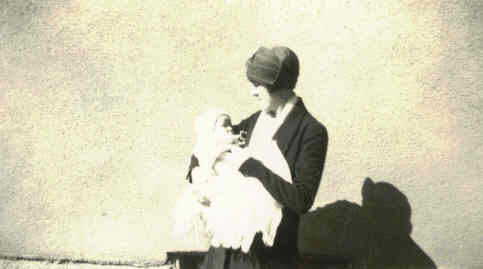 |
During the depression, Ross started a paper business selling all types of paper products out of his garage. Ross would tease his grandchildren about why his toenail was so odd. Actually, “an elephant didn’t step on it,” but a roll of paper fell on it. Perhaps he was bald not “because a dog took his hair off” but just because he was getting older! During Harold’s high school years, Minnie worked in a music and gift shop (Miller’s Music Company) where fine china was one of the items sold, and she often succumbed to the temptation to spend some of her earnings for her special china teacup collection.
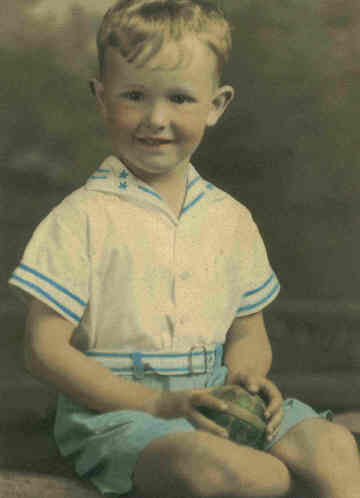 |
Harold’s memories of his childhood are very happy. He had a lot of cats while growing up, one named Bosco and another named Zipper. |
A special treat was visiting Lake George, Colorado where his family had a log cabin.

Here are Ross and Minnie at Lake George with their fishing gear
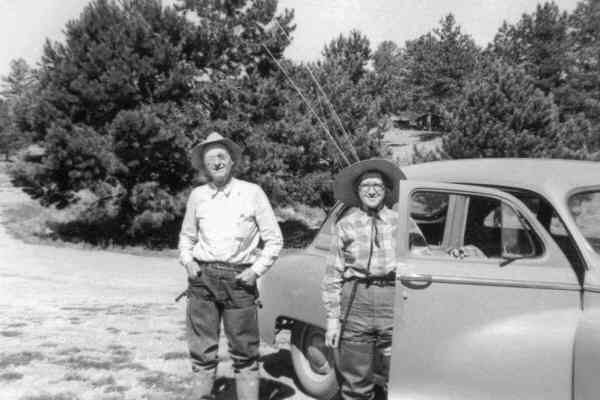
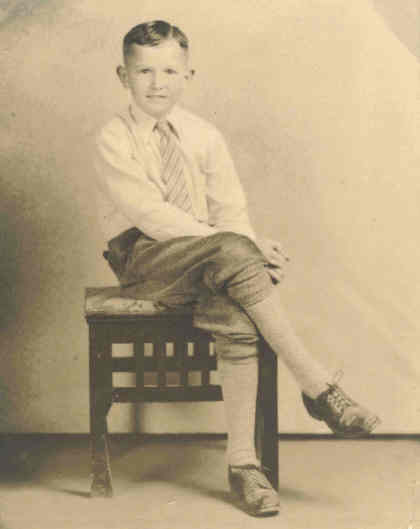 |
As a growing boy Harold enjoyed attending the Presbyterian Church with his family and doing his paper route. He learned to play the violin and trumpet, playing in the junior high orchestra and the church orchestra, and became so good at the trumpet that he was invited to join a band playing at the Broadmore Hotel and ballroom, the finest hotel in town. |
During Harold’s high school years in the midst of WWII, Ross and Minnie sold their house on Cedar Street and purchased an apartment house where they lived for a few years in order to manage the property. Eventually they bought a house on 811 North Foote Avenue where they lived for many years.
| Ross and Minnie doing dishes in the kitchen | 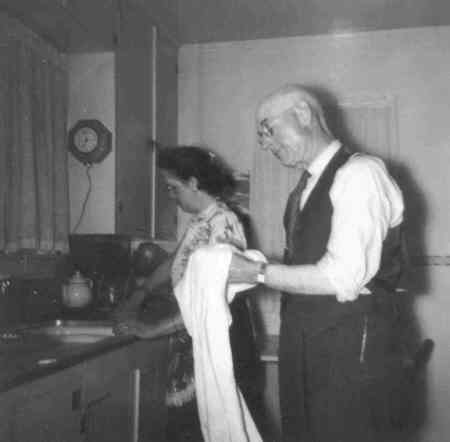 |
Harold had a strong sense of justice and often fought for the underdog. One day he witnessed a bully throwing rocks at the boat his friend was rowing. His friend was weak from rheumatic fever. Harold asked the bully to stop, but he continued to throw rocks. Harold tackled him, but was soon caught in a pincer hold and unable to defend himself (this bully was known to be a good wrestler). Another friend saw what was happening, a black friend from Harold’s paper route, and wrestled the bully to the ground. The bully left in a hurry. Harold made a lot of friends on his paper route. One black minister, confined to a wheelchair, enjoyed long discussions with Harold about the black problems in the city. Harold would long remember this intelligent, articulate man with his caring heart. One day in school, Harold watched as some mean boys tried to get a fellow classmate with cerebral palsy to eat a bar of chocolate Ex-Lax. He stood up for the boy and stopped it from happening.
| For several summers Harold worked for Stewart’s, a professional photography studio. He learned the film developing process and was noted to be an excellent employee. | 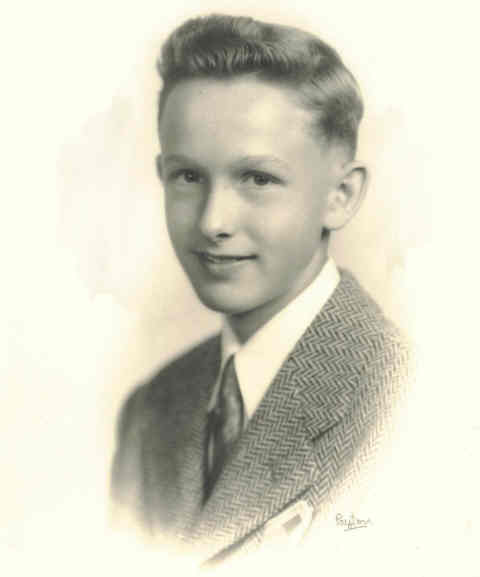 |
While in high school, Harold had an old Model A Ford Roadster that was orange with black fenders. He repainted it blue but while the paint was drying the end of WW II was announced (VE Day, the European theater) and he drove around town with his buddies riding on the hood of his newly painted car. When they stopped and got off, the bottoms of their pants were blue!
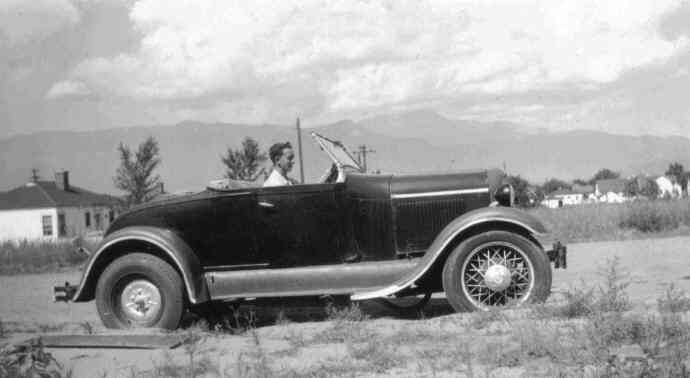
 |
During his senior year of high school, Harold received a notice to report for the Army. He chose to enlist in the Navy instead on his 18th birthday, December 18, 1945. He left for boot camp in San Diego, California before finishing high school. |
In June of 1946 he returned for his graduation and graduated in his Navy uniform. Four other friends were also in uniform that day. After boot camp, Harold was stationed on a tugboat in Seattle, Washington for about 2 years. When the war was over, Harold brought a lot of the ships bringing soldiers back home into harbor and helped transport destroyers and aircraft carriers as they were being put into “mothballs” after the war.
